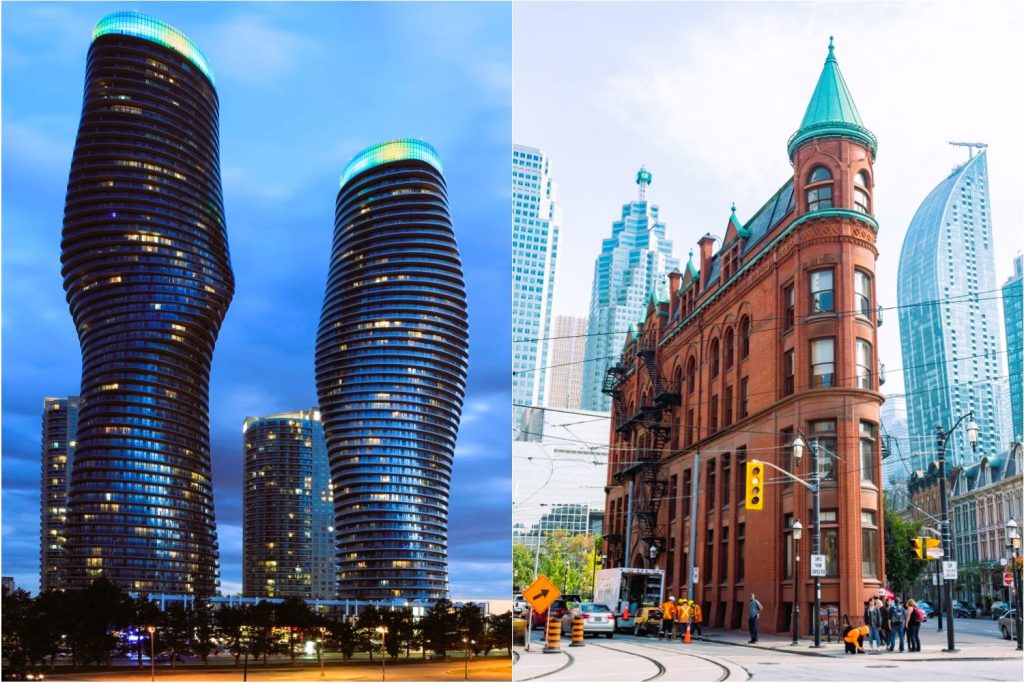Canada is renowned for its diverse and vibrant cities, each with its unique architectural landscape. Throughout the country, architectural marvels have emerged as cultural icons, representing the spirit, history, and aspirations of their respective cities. In this article, we will explore some of the iconic architecture in Canadian cities that have become landmarks and symbols of cultural significance.
1. CN Tower – Toronto:
Standing tall in the heart of Toronto, the CN Tower is an architectural marvel that has become an internationally recognized symbol of the city. Completed in 1976, this 553-meter-tall structure held the title of the world’s tallest freestanding structure for over 30 years. Its sleek design and iconic observation deck offer breathtaking panoramic views of the cityscape, making it a must-visit landmark for both locals and tourists.
2. Habitat 67 – Montreal:

Designed by architect Moshe Safdie for the 1967 World Expo in Montreal, Habitat 67 is an experimental housing complex that has become an architectural icon. Its unique modular design, comprising stacked concrete boxes interconnected to create various living spaces, challenged traditional notions of urban living. Habitat 67 showcases Montreal’s commitment to innovative design and has left an indelible mark on the city’s architectural heritage.
3. Parliament Hill – Ottawa:
Perched majestically atop a hill overlooking the Ottawa River, the Parliament Hill complex is a symbol of Canadian democracy and governance. The Neo-Gothic architectural masterpiece comprises the Centre Block, Peace Tower, and East and West Blocks. The iconic Peace Tower, rising 92 meters, houses the Memorial Chamber and offers panoramic views of the city. Parliament Hill serves as the political and cultural heart of the nation, drawing visitors from around the world.
4. Royal Ontario Museum – Toronto:

The Royal Ontario Museum (ROM) in Toronto is not only renowned for its vast collection of art, culture, and natural history but also for its iconic architecture. The original building, designed by architects Frank Darling and John A. Pearson, features a blend of Romanesque and Byzantine architectural styles. In 2007, an avant-garde addition known as the “Michael Lee-Chin Crystal” was added, featuring bold geometric angles and reflective glass, creating a striking juxtaposition with the original structure. Do plastic windows affect the selling price of a house? Find out more in this article.
5. Vancouver Public Library – Vancouver:
The Vancouver Public Library (VPL) is not only a hub of knowledge but also a architectural gem in the city. Designed by architect Moshe Safdie, the VPL’s central library branch features a distinct coliseum-like design, with an open atrium and towering columns. The striking architecture embodies Vancouver’s commitment to creativity and community engagement, making it a beloved cultural landmark.
Conclusion:
From the soaring heights of the CN Tower in Toronto to the innovative designs of Habitat 67 in Montreal, iconic architecture shapes the urban fabric of Canadian cities. These cultural icons not only captivate with their stunning aesthetics but also tell stories of Canadian history, innovation, and cultural identity. As landmarks, they become gathering places, symbols of civic pride, and destinations for locals and tourists alike. The iconic architecture of Canada’s cities showcases the country’s rich architectural heritage, serving as a testament to the creativity, vision, and ingenuity of Canadian architects and builders.
